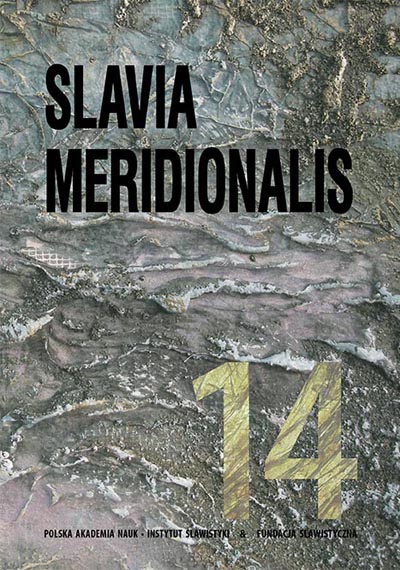Kategorie "początku i końca dziejów" w serbskiej historiozofii – dominanty problemowe i metodologiczne
The concept of “the beginning and end of history” in Serbian historiosophy. Dominant problematic and methodological features
Author(s): Dorota GilSubject(s): Social Sciences, Sociology, Nationalism Studies
Published by: Instytut Slawistyki Polskiej Akademii Nauk
Keywords: historiosophy; methodology of the description of the Serbian history; Orthodox religious thought; category of the beginning
Summary/Abstract: In this study, the most representative and (importantly) not easily methodologically categorised historiosophical concepts of the Serbian state and nation are taken into consideration. Among these, the most elementary point of reference is that of “the beginning and end”. On the one hand the Serbian philosophy of history – dependant both on common historiosophical concepts and native ideas – demonstrates its connections with orientations of a post-Hegelian background; while on the other connections can be seen with the Providentialist historiosophy dominant in the first part of the 20th century in Serbia and, nowadays, taking into account history in Soteriologic and Eschatological terms – Christian historiosophy (more strictly: the Orthodox theology of history based on the Russian pattern), as well as eclectic historiosophy referring to the contamination of indigenous folk tradition and ethicised Orthodoxy (which in turn synthesises mythic and messianic elements). Within all perspectives and methodological practices, the very thought enabling the whole history of Serbia and the Serbs to be grasped – referring at the same time either to constant casual mechanisms concerning the national consciousness or to the variously-defined national psyche – is co-constructed and present in all ideas: the concept of “the beginning and end”. Within this concept, several events and historical figures – forming a constitutional and basic domain of meaning with its potential as loci communes – are grasped: the beginning of Nemanjić’s state, St. Sava as the “Serbian beginning and end”, and the very central event – the Battle of Kosovo – within the transcendental frame – as the beginning of the cyclically repetitive “holy history”, etc.
Journal: Slavia Meridionalis
- Issue Year: 2014
- Issue No: 14
- Page Range: 189-201
- Page Count: 13
- Language: Polish

